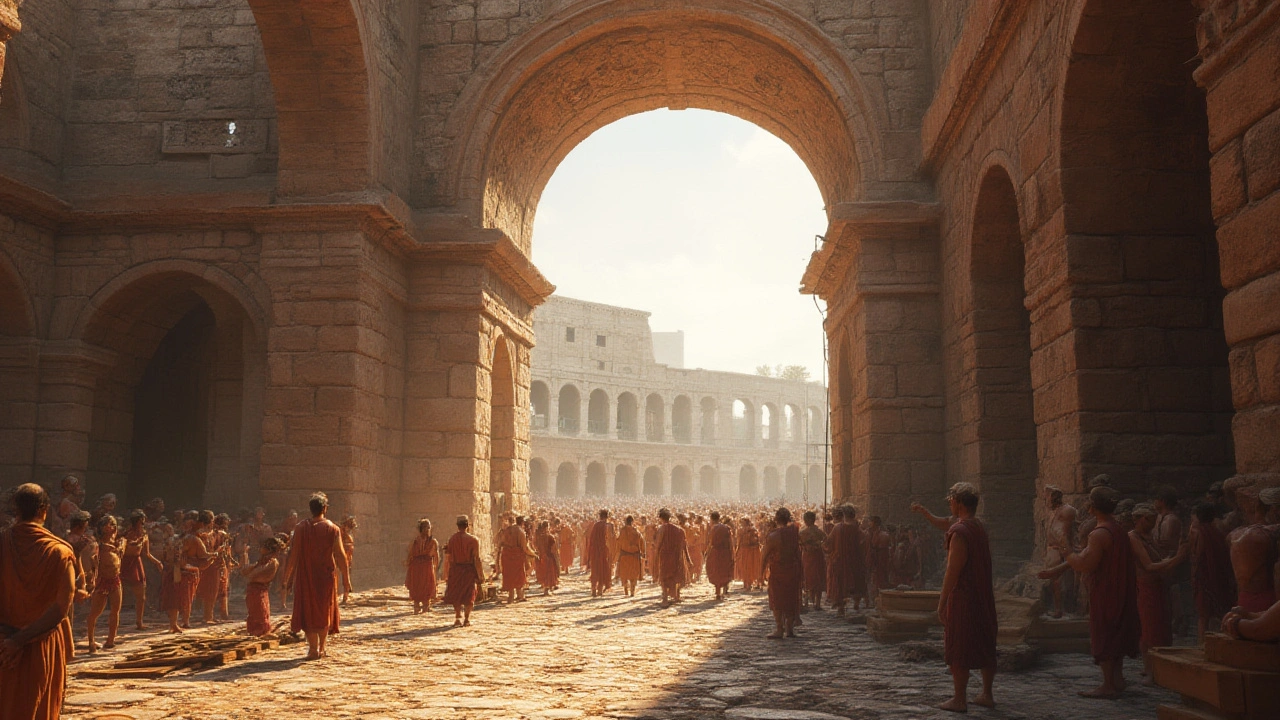Discover the key structures of ancient Roman architecture - from the Colosseum to Roman concrete - and how they still shape modern buildings, infrastructure, and urban design today.
Roman concrete: why it still stands
Roman concrete helped build roads, ports, and the Pantheon. Some Roman structures are intact after two thousand years. That makes engineers and builders ask: what did Romans do differently?
The secret was a mix of volcanic ash, lime, and seawater. Romans used pozzolana, a volcanic ash from places like Pozzuoli and the Bay of Naples. When mixed with lime and water the ash creates a chemical reaction that strengthens the material over time. In seawater, that reaction can produce stable minerals that resist cracking and erosion.
How it works
Modern concrete uses Portland cement. Roman concrete used hydraulic lime and volcanic ash. The ash contains silica and alumina. These react with lime to form calcium-aluminum-silicate hydrates. In marine settings, new minerals like aluminium tobermorite can form inside the mix and bind it tightly. Those minerals grow over decades, closing pores and stopping salt water from breaking the material apart.
Another Roman trick was how they packed and cured the mix. They often built thick forms, allowed slow setting, and let seawater help the chemical changes. They also reused broken stones and bricks as aggregate. This made the mix less brittle and cheaper to produce.
Famous examples include the Pantheon dome, the breakwaters near Pozzuoli, and Roman aqueducts across Europe. The Pantheon used concrete with lightweight pumice in its upper dome to reduce weight without losing strength. Roman harbor piers show how seawater actually improved the mix over time. Studying specific sites helps engineers and conservators pick better materials and treatment methods for new or repaired structures. It matters.
Why it matters today
There are three practical lessons for today’s builders. First, material choice matters—pozzolanic additives can extend life and lower carbon compared with some cements. Second, mix and curing affect durability. Slower reactions and internal mineral growth can be stronger long term. Third, using local materials can cut transport and adapt mixes to local conditions.
Researchers are studying Roman samples and running lab tests to copy their chemistry. Some modern mixes use volcanic ash or industrial byproducts like fly ash to get similar results. That helps reduce CO2 from cement and improves resistance to corrosion in marine projects.
If you want to spot Roman concrete in the field, look for rough, dark cores behind dressed stone faces or in piers and breakwaters. The inside often looks like packed rubble with a hard, cemented paste. In wet marine parts the concrete surface may show white mineral patches or a glassy sheen from altered ash.
For conservation, the goal is to repair with compatible materials. Using modern Portland cement on ancient concrete can cause cracks and stress. Conservators prefer lime-based mortars with pozzolans that move and breathe like the original. Tests on small areas and using similar aggregates help avoid new damage.
Roman concrete is practical proof that smart chemistry and local resources make lasting buildings. Whether you're a student, a builder, or just curious, examining Roman techniques offers clear ideas for longer-lasting, lower-impact construction today.
Explore the incredible techniques behind ancient Roman architecture—uncover their iconic arches, concrete secrets, and groundbreaking innovations.

